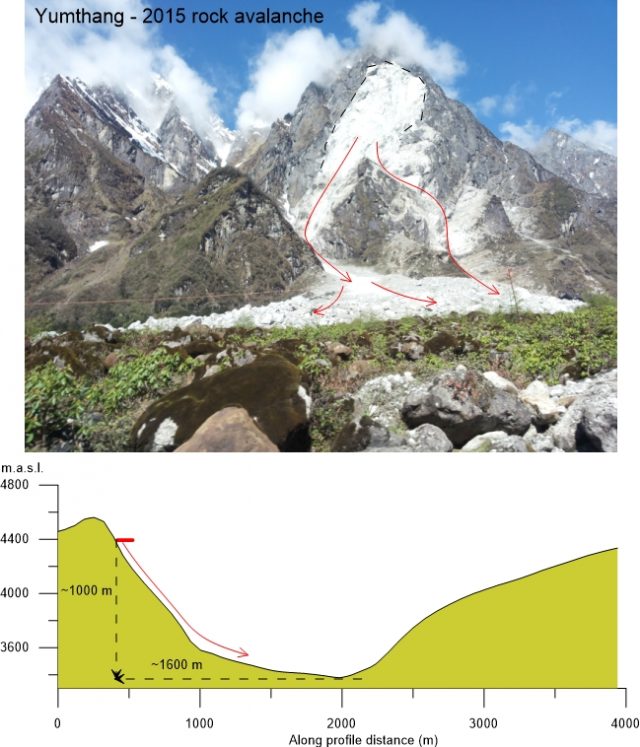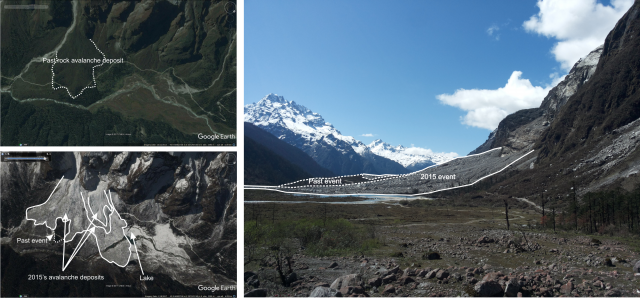22 June 2017
A recent rock avalanche in the Yumthang Valley in Sikkim, northern India
Posted by Dave Petley
A recent rock avalanche in the Yumthang Valley in Sikkim, northern India
A team of researchers from the Geological Survey of Norway (NGU; Reginald Hermanns, John Dehls and Ivanna Penna), the Norwegian Geotechnical Institute (NGI; Rajinder Bhasin), the Indian Institute of Technology Kharagpur (IIT; Sengupta Aniruddha), and the Wadia Institute of Himalayan Geology (WIHG; Vikram Gupta), have recently started a joint Indo-Norwegian project focused on the occurrence of landslides along two important road corridors connecting Sikkim (northeastern part of India) with China. They have very kindly sent some details to me of a recent rock avalanche that they have found in the Yumthang valley in Sikkim, shown below.

The Yumthang rock avalanche. The upper image shows a view to the headscarp and deposits of the 2015 rock avalanche in Yumthang valley. The lower image provides a cross section that shows the asymmetric profile of the valley, and the height and run-out of the 2015 rock avalanche. Note how the propagation is controlled by triangular facets on outcrops
.
They found this previously-unreported landslide during their first field visit. The rock avalanche occurred between 20/01/2015 and 12/05/2015 (based on free Google Earth Imagery). The slope failure occurred on the western slope of the valley, and travelled about 1.4 km, damming the river and creating a lake with an area of 0.2 square kilometres. The Yumthang valley has a asymmetric profile in this sector, with a western slope inclining ca. 50° while the eastern dips 32° (see the cross-section above).
Before reaching the valley floor, the failed rock mass propagated in two branches, controlled by triangular facets developed on the outcrops. The travel angle of the rock avalanche is ~32 degrees. Three overlying lobate deposits on the northern part suggest three separate events. The deposits bracket an older rock avalanche deposit of unknown age, covered by native forest.

Figure 2. Past and current rock avalanche deposits in the lower section of the Yumthang valley.
.
Fallen and aligned trees on the old rock avalanche deposits and the opposite slope of the valley extend up to 300 m from the distal part of the rock avalanche, highlighting the energy of the air blast, which can be seen in the image below. However, there is an asymmetric distribution of this air blast, probably controlled by local relief.

Damage to vegetation coverage caused by the air blast from the Yumthang rock avalanche


 Dave Petley is the Vice-Chancellor of the University of Hull in the United Kingdom. His blog provides commentary and analysis of landslide events occurring worldwide, including the landslides themselves, latest research, and conferences and meetings.
Dave Petley is the Vice-Chancellor of the University of Hull in the United Kingdom. His blog provides commentary and analysis of landslide events occurring worldwide, including the landslides themselves, latest research, and conferences and meetings.